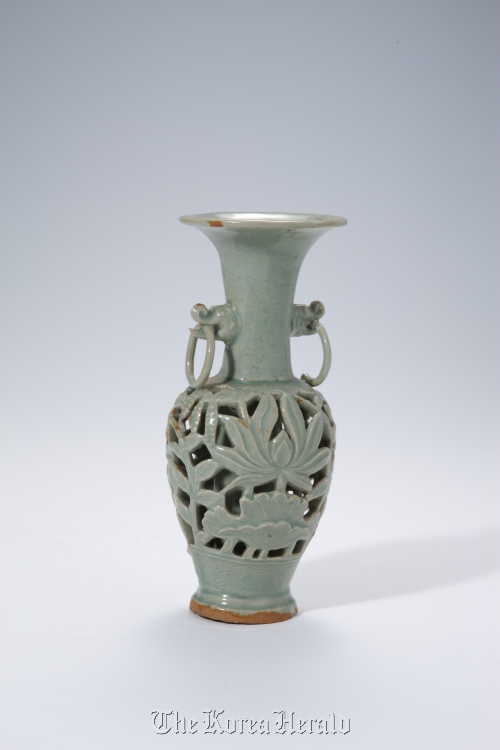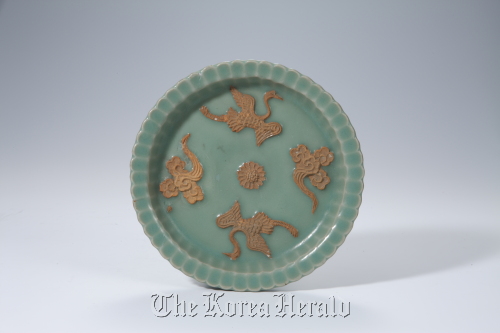Popular Longquan ware found in sunken ship off coast of Sinan shows beauty and culture of 14th century AsiaThe National Museum of Korea is holding a special exhibition featuring about 90 pieces of 14th century Chinese celadon ware found in a shipwreck.
The featured pieces are known to be from the Longquan region of China’s southern Zhejiang province, where the most superior kind of Chinese celadon ware was produced at the time.
In 1323, a Chinese merchant vessel carrying more than 30,000 items for export, including ceramics, sank off the southwest coast of Korea at Sinan. It was en route from Ningbo, China to Kyoto, Japan.
The ship was accidentally discovered by a Korean fisherman in 1975 ― more than 650 years after sank. Its site was excavated from 1976 to 1984, bringing the long-lost artifacts back to the surface.
Among the 30,000 artifacts, 14,000 pieces were found to be Longquan celadon ware, including tableware.
 |
| Celadon Vase with Two Grips incised with Lotus Designs (National Museum of Korea) |
“The pieces found in the Sinan wreck show how the Japanese had a strong preference for Longquan ware at the time,” said Kim Young-mi, a researcher at the National Museum. “By the 16th century, Longquan ware was being exported to Western Asia, Africa and even Europe.”
The exhibition showcases different types of Longquan ware, its signature jadish color, and cultures of 14th century Asia reflected in the featured pieces.
It was during the Southern Song Dynasty that the production and quality of Longquan ware reached its highest level. The icy, jadish color of the celadon ware was called “Fenqing,” meaning layers of transparent blue with a subtle white hue.
 |
| Celadon plate with cloud and crane patterns (National Museum of Korea) |
“They were trying to imitate the color of a clear sky after rain,” said Kim.
The items on display include dishes, bowls, stem cups, ewers, incense burners, flower vases and pots for interior decoration.
Many of them are decorated with patterns of peonies, lotus flowers, eight trigrams and dragons with clouds.
“The Japanese enjoyed tea ceremonies using Longquan ewers and cups,” said Kim. “They also used the incense burners to keep their indoor air pleasant. And some people simply used them for decoration purposes.”
The term “celadon” in fact has a close connection with Longquan ware. During the 16th century, an opera called “l’Astre,” was extremely popular in Europe.
In the opera, a character named Celadon, who loves the heroine l’Astre, wears a costume of jadish color.
When Longquan ware pieces were first imported to Europe, people started calling them “celadon ware,” as their color was similar to the one of opera character Celadon’s costume.
“China does own a lot of Longquan ware,” Kim said. “But I believe our museum owns one of the widest collections (of Longquan ware) in the world.”

